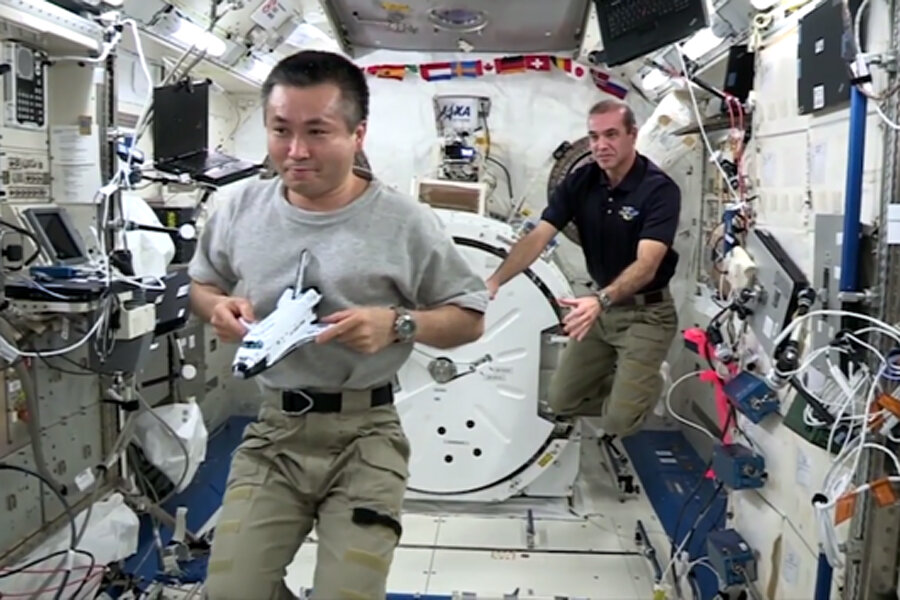Astronauts celebrate 'Cosmos' with zero-g physics lesson
Loading...
The new "Cosmos" science TV series on Fox has received an out-of-this-world from astronauts on the International Space Station in a new video showing how weightlessness works.
In the new video beamed from space, NASA astronaut Rick Mastracchio shows how Isaac Newton's third law of motion works in microgravity, 260 miles (418 kilometers) above Earth.
Newton's law states that every action produces an equal and opposite reaction. To demonstrate this, Mastracchio pushes his colleague Japanese astronaut Koichi Wakata, commander of the International Space Station, along with a model of NASA's now-retired space shuttle. As Wakata and the model spacecraft float forward, Mastracchio drifts backwards.
"This is simple science but the more complex science we're doing here on the space station will help us bring real world benefits back to humanity on Earth, as well as take us further into the cosmos than ever before, including to an asteroid, the moon or on to Mars," Mastracchio said.
Astrophysicist Neil deGrasse Tyson, host of "Cosmos: A Spacetime Odyssey," introduced the video of his "friends in high places," saying, "when you're doing science, you have to do experiments."
Mastracchio and Wakata are two of six people currently aboard the $100 billion space station, which has been continuously occupied by rotating crews of astronauts since 2000. Three of their colleagues, NASA astronaut Mike Hopkins and Russian cosmonauts Oleg Kotov and Sergey Ryazanskiy, are set to leave the orbiting outpost Monday night and return to Earth in a Russian Soyuz capsule.
Follow Megan Gannon on Twitter and Google+. Follow us @SPACEdotcom, Facebook or Google+. Originally published on Space.com.
- 'Cosmos' Honored In Space With Experiment | Video
- Photos from 'Cosmos: A Spacetime Odyssey' TV Series (Gallery)
- Amazing Space Photos by Japanese Astronaut Koichi Wakata in Orbit
- Amazing Photos: NASA Astronaut Rick Mastracchio's Space Station Views
Copyright 2014 SPACE.com, a TechMediaNetwork company. All rights reserved. This material may not be published, broadcast, rewritten or redistributed.







